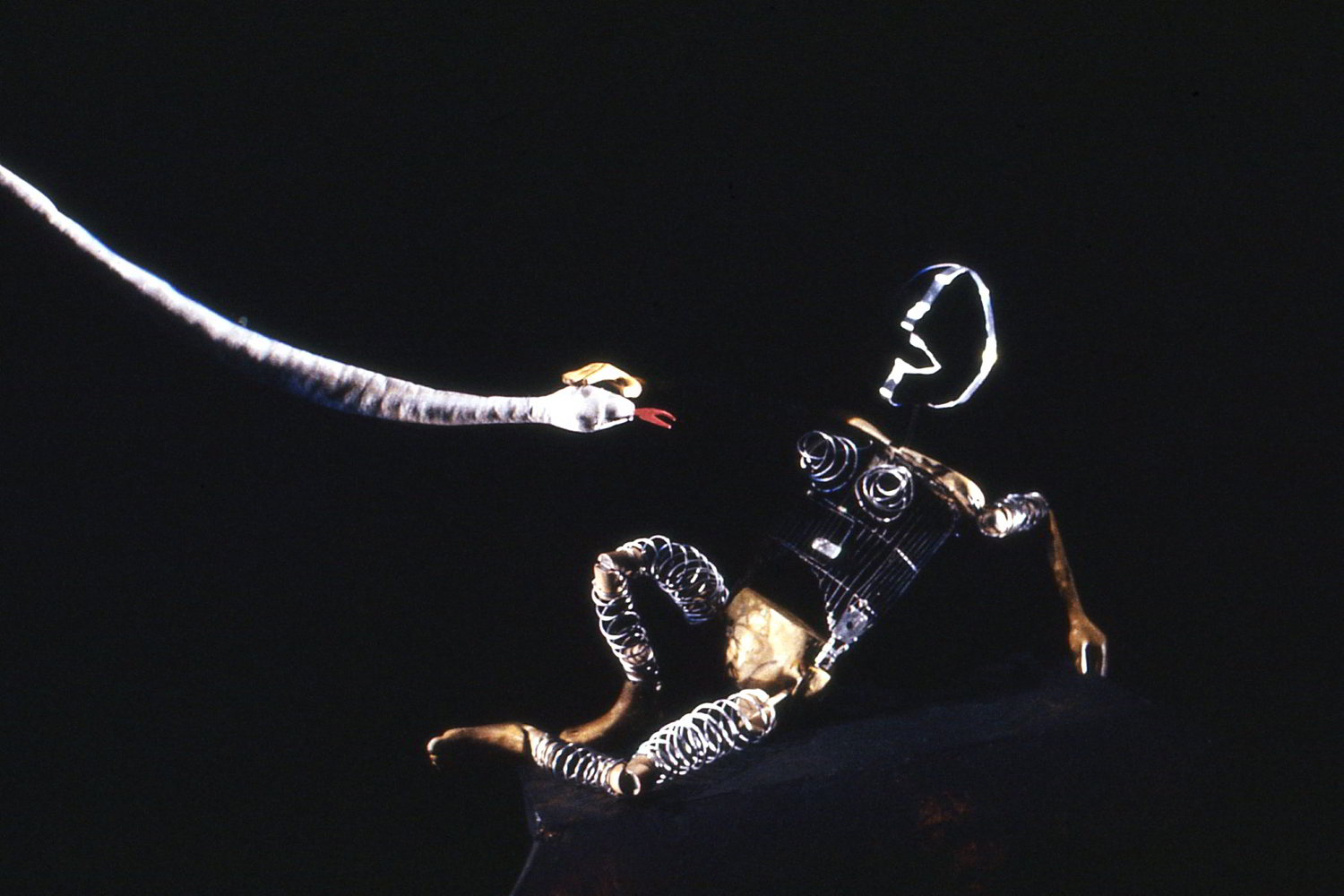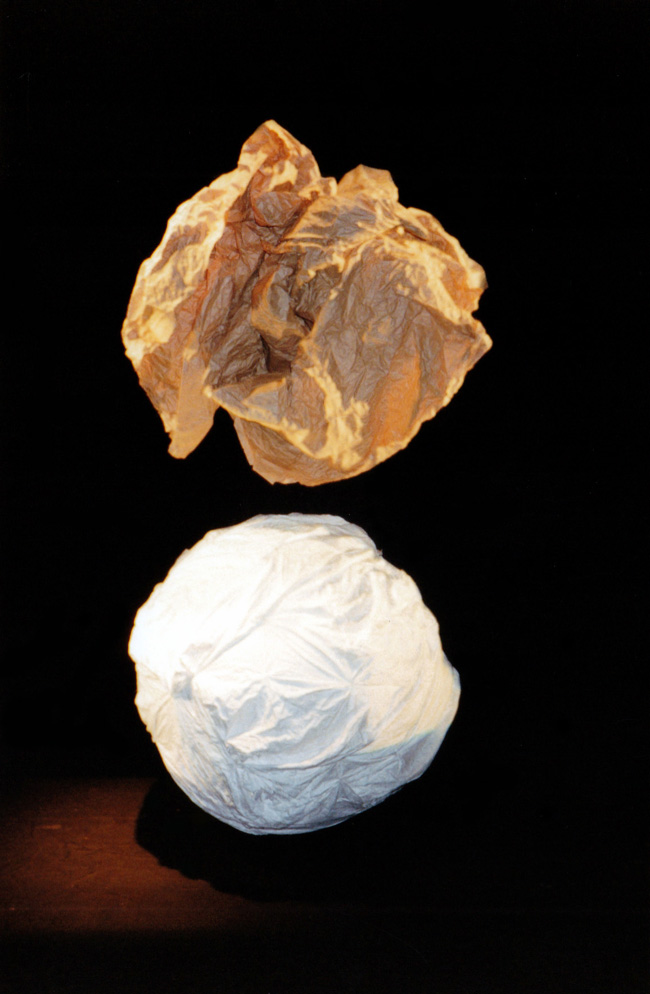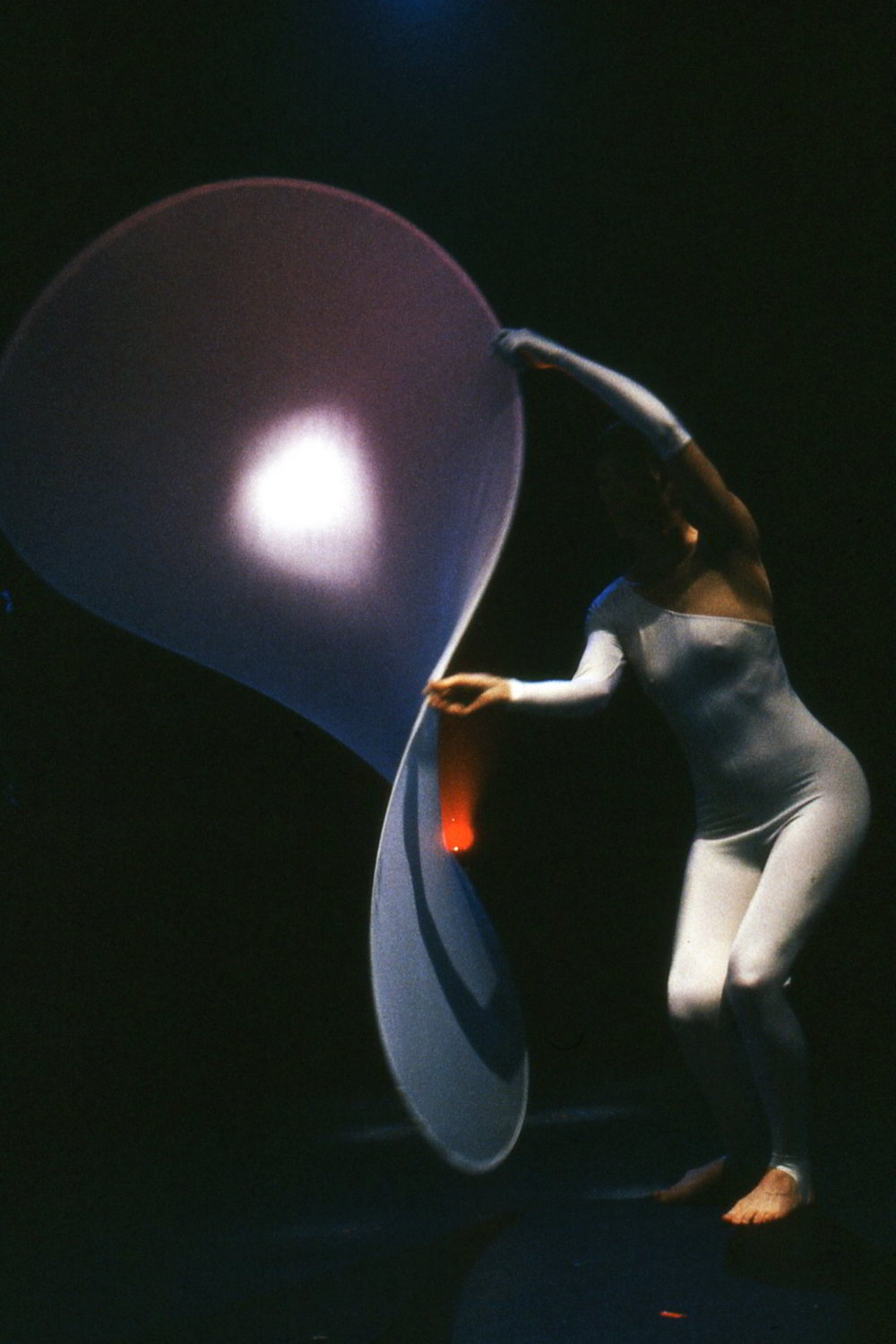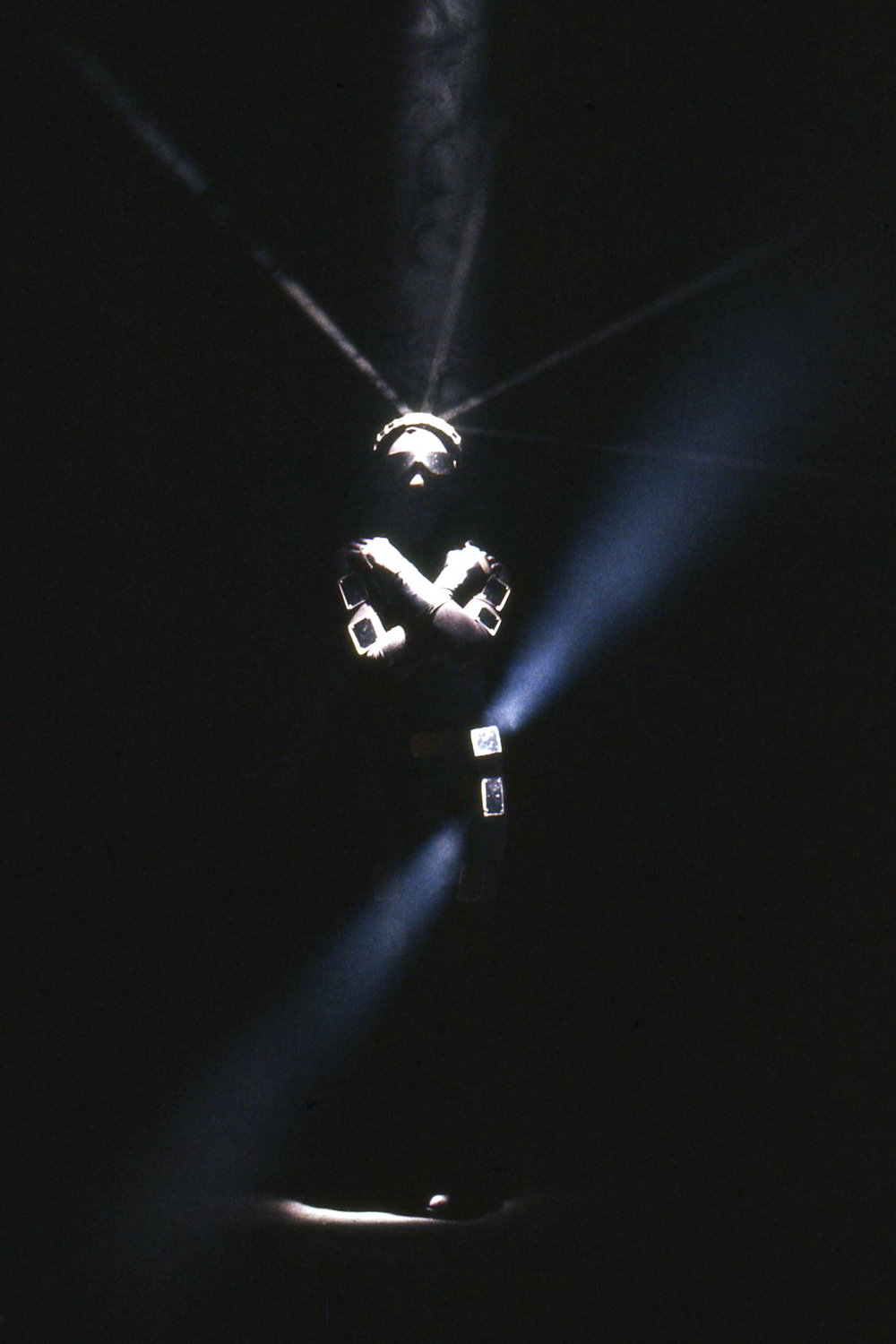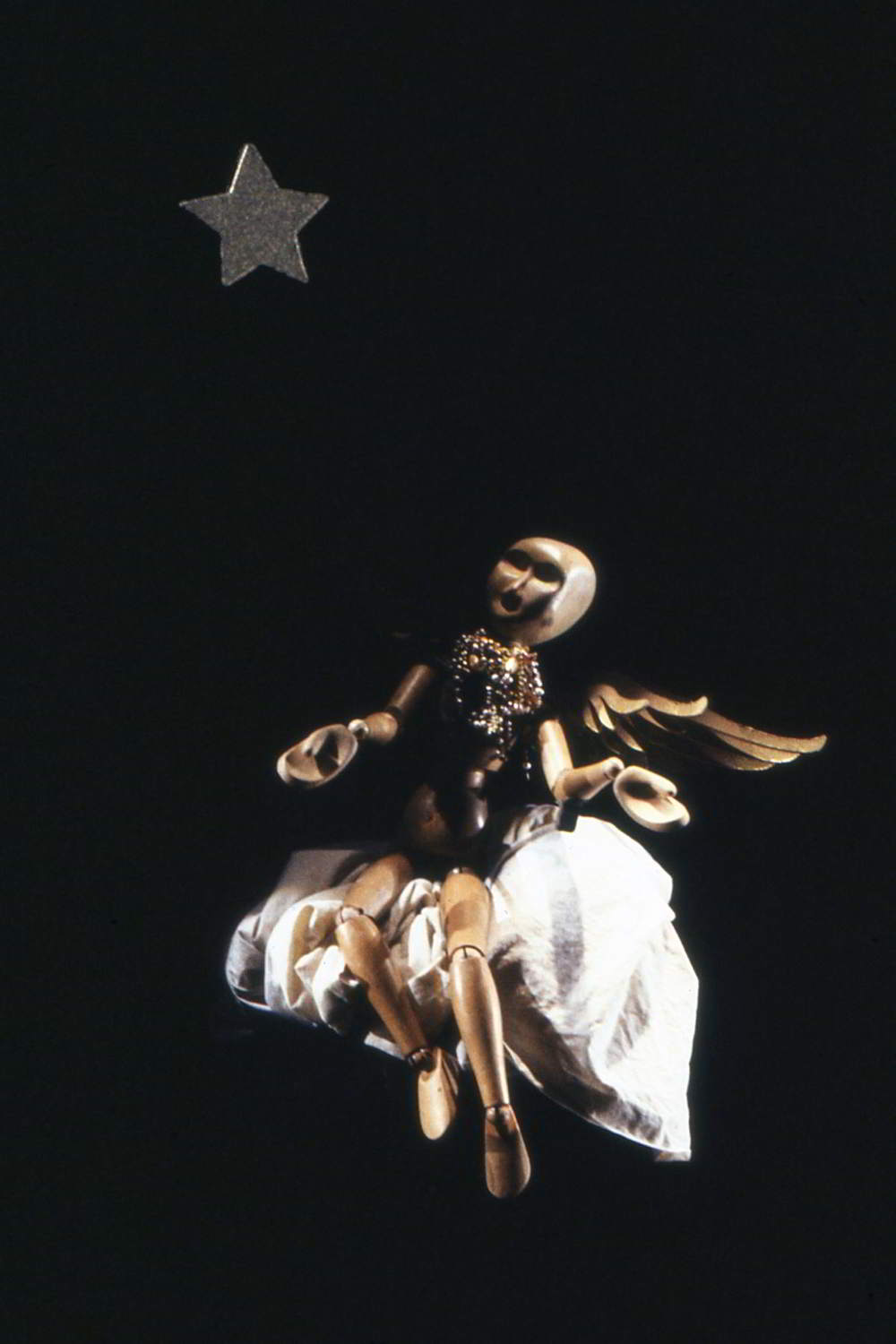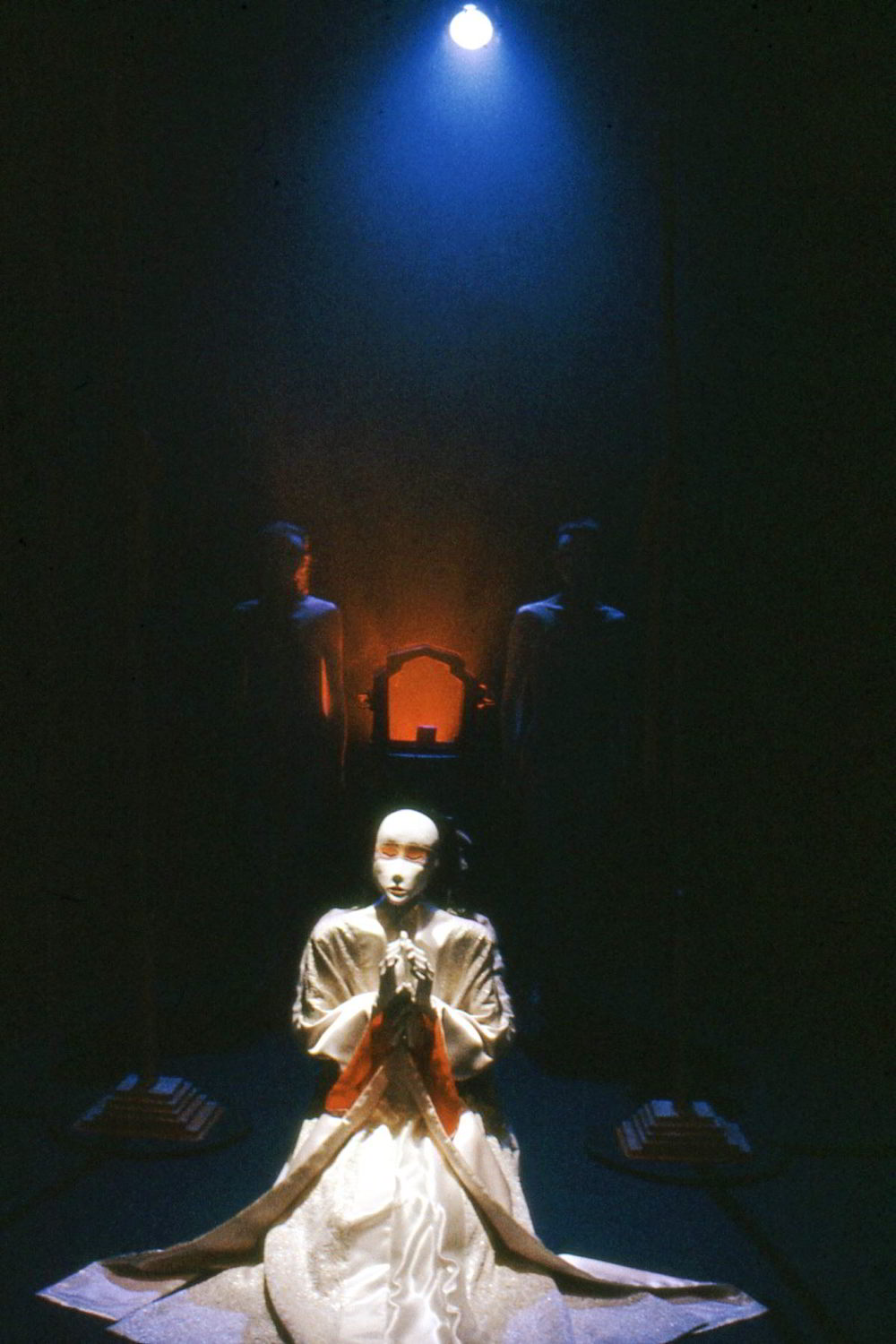| Premiere | 27 August 1993 |
| Venue | U2, Universal Theatre, Fitzroy |
METAFOUR was the first work programmed by Ken Evans when appointed Handspan's Artistic Director in 1993. It was produced to create an opportunity for experienced company members to focus on and develop their individual skills and ideas through visual theatre. Unlike the company's mainstage production earlier in the year, Viva La Vida - Frida Kahlo which was staged with actors and lavish visual characters and effects, Ken described the project as: back-to-basic stuff - no text, no actors, just puppets1
.
Each segment was devised and performed by experienced individual Handspan members: Katy Bowman, Lizz Talbot, Avril McQueen and Michele Spooner for performance in a similar format to Women Alone (1989). Its six acts aimed to be brief visual metaphors that were evocative in style, polished in technique and conceptually symbolic rather than narrative. Performers assisted in each others' segments and together, the acts were segued into a full-length performance through black theatre lighting designed by Philip Lethlean.2
METAFOUR was presented for a showcase season at the Melbourne Fringe Festival in 1993 sub-titled: Image - Body - Object - an evocative showcase of visual eclecticism. Leonard Radic, Melbourne theatre critic claimed this was:
Another way of saying it follows no particular style or mode. While one work may use light or music to bold effect, for example, another uses the techniques of black light theatre or conventional puppetry. What the works have in common, however, is not merely a technical adventurousness, but an ability to create images which are powerful and enduring.
The Program
METAFOUR presented four different puppetry and visual performance styles explored by individual artists in a program of independent conceptual ideas:
Works
Devised by Katy Bowman, Works was in three parts: Cycle, Fluid Forms and Light Dance thematically suggesting creation, death and re-creation. The pieces continued Katy's fascination with materials and body movement in performance, and added the interplay of light to the movement tableaux that developed. The segments opened the show and interspersed the subsequent acts in the production.
The highlight is indubitably Katy Bowman's three ultra-short exercises in material manipulation, all are visually stunning and see Bowman playing variously with brown paper, a white lycra hoop and mirrors: exquisite.
Katy's shapes and figures inflate, collapse and even turn inside out to reveal the process of mutability.
Wired
Wired was devised by Lizz Talbot inspired by ancient history and contemporary mythological literature, particularly that of South American writer, Isabel Allende. Lizz devised the piece, and built its images, centrally an aluminium, wire and wood construction of a human female.
I was interested in looking at a place where women were freed from original sin, there is recurring imagery of flight and snakes. I approached the script in a very formal, narrative way, but the story is told with symbols rather than words.
A skeletal figure made from wood and wire dances mid-air, apparently of its own accord. It symbolises flight and in the end takes wing and soars off into the ether. ... A snake-like figure emerges from the mouth of its wired human. We are in the world of mythology here, and audiences will interpret the imagery variously according to their own lights.
The Insider
This vignette, devised by Avril McQueen aimed to illustrate the youthfulness of spirit inside an aging body. Her program notes read:
The Spark Inside, The Kick Inside, The Heart Inside. I am 78 and I still feel 18 Inside. Decayed, deformed, decrepit. Too soon to Disregard. Too soon to Discard.
Avril used stock puppets from the Handspan collection to represent an old woman and a younger spirit whose reactions to small objects were brief glimpses of mental strength inside physical frailty.
The Insider reveals how suggestive a puppet of just a head and a length of cloth can be. An engaging baby puppet becomes an aged woman whose inner youthfulness is represented by a smaller, joyful wooden puppet which defies the passing of time.
The child is a haunting figure who, like the child in Cho Cho San is calculated to impinge itself on the audience's consciousness.
Rites of Passage
The most technically and conceptually complex of the acts, Rites of Passage was devised by Michele Spooner in response to her program note questions:
When is permission given? When is permission withheld? and, Who are our guides?
The piece continued Michele's exploration of the relationship between object and manipulator, that built on her previous Vignettes: Smalls, Moments and The Immaculate Contraption (in Women Alone). In the theme of this work, she looked at the influence of guiding hands.
For a long time I always loved finding a mentor and absorbing and taking what I could from them. Over the years I've come to see art as a religion; it's something that people believe in.
Rites of Passage was performed by a masked and robed 'priestess' who operated a puppet and a candle, in ceremonial and ritual moments that revealed their power-play. 'It is not until the candle goes out that she (the puppet) can really see', explained Michele.3 .
Employing both puppets and operators as characters on stage, Rites of Passage dramatises the process of human learning by using the puppet as pupil. This involves a clever demonstration of the way in which puppetry make possible a double vision. We see the operator at work, but she alternately becomes visible and invisible as our focus shifts from product to process in the story.
Reactions
METAFOUR was well-received by Melbourne critics and the production was awarded the 3LO Performing Arts Best Group Award by the radio station for its Fringe Festival season.
The most impressive show so far (in the Fringe) comes from Handspan. The emphasis is on imagination and simplicity and despite the absence of sumptious visuals, which have become Handspan's trademark, this is the freshest and most exciting work it has done for some time.
This represents a return to a purer form of puppetry for Handspan, a wordless performance where the soundscapes and lighting are vitally important. The range of ideas and techniques is most impressive, the effect charming as it is intriguing.
The colour, shapes and textures on display give a sense of artwork come to life and music is imaginatively used to alter the mood of the pieces, working highly effectively.
METAFOUR re-engaged Handspan's members and its performing ensemble after their drift from the company during David's Baird's artistic leadership (1991 - 1992).
By programming the work as the first in his new role, Ken Evans aimed to re-emphasise and consolidate the company's visual performance skills and techniques, and at the same time, to reinforce Handspan's early collaborative practice of creating work in which:
Every member of an ensemble should feel personally responsible for the success of the work and prepared to take action to ensure it.
Footnotes:
| Creative team/Performers | |
|---|---|
| Works | Katy Bowman |
| Music for Light Dance Michael Nyman | |
| Wired | Lizz Talbot |
| The Insider | Avril McQueen |
| Rites of Passage | Michele Spooner |
| Lighting designer | Philip Lethlean |
| Performers | |
|---|---|
| Cycle | Lizz Talbot & Avril McQueen |
| Fluid Forms | Katy Bowman |
| Light Dance | Avril McQueen |
| Wired | Lizz Talbot |
| The Insider | Avril McQueen |
| Rites of Passage | Michele Spooner |
| Production team | |
|---|---|
| Stage manager | Mikkel Mynster |
| Puppet maker | Colleen Crapper with Katy Bowman, Lizz Talbot, Avril McQueen & Michele Spooner |
| Graphic designer | Fiona Sweet |
| Poster image | Paul Dickenson |
| Production assistance | Winston Appleyard, Carmelina Di Guglielmo, Monray, Daryl Pellizzer, Heather Monk, Peter J.Wilson, Vivia Hickman, Robert Stephens, John Rogers, Michael Buckley, Toni Wallace, Jo Briscombe, Jacky Talbot & Maeve Vella |
| Season | |
|---|---|
| 27 August - 12 September | U2, Universal Theatre, Fitzroy, Melbourne Fringe Festival |
| Total performances | Unknown |
| Total audience | Unknown |
